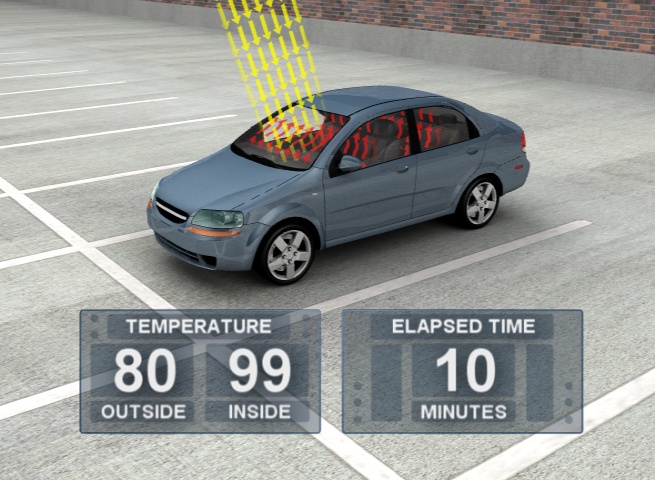
13 Sep What is “the Greenhouse Effect” And How Does it Work in Cars?
Usually when we hear about the “Greenhouse Effect,” it is in relation to climate change and the heating of the Earth. Greenhouse gets its name from those nice warm greenhouses people are able to grow plants in all season long. Even in the dead of winter, greenhouses stay toasty warm for plants to grow.
But the same process that heats up those greenhouses to grow plants and the global one that heats up our Earth and adds to climate change, is also responsible for heating up our cars – much warmer than the outside temperature in a matter of minutes.
When the short-wave energy of the suns rays pass through the car windows, they heat up the surfaces inside the car. Some of the suns rays get absorbed in the seats, dashboard, floormats, etc. (Ever sit on a vinyl cat seat with shorts after it’s been baking in the sun? Ouch!) The heat from the surfaces produces long-wave infrared radiation that radiates off the hot surfaces – but now the car’s windows become a kind of one-way mirror. The glass won’t let as much of the longer wavelengths back through, preventing most of the radiated heat from leaving. This means more energy is going in than is getting out and causes the inside of the car to quickly get hotter than the outside.
Check out this video of the Greenhouse Effect at work on a parked car.
And in study, after study, leaving the windows cracked has little if any affect. Cars with windows open still heat up to the same temperature at about the same time as cars with the windows cracked.
None of this will matter to a dog roasting in a hot car, of course, but now you can impress your friends and family as you educate them why it’s not cool to leave their dog in a hot car. It’s also why 10 out of 10 dog-loving scientists agree: Don’t leave your dog in a hot car!



Sorry, the comment form is closed at this time.